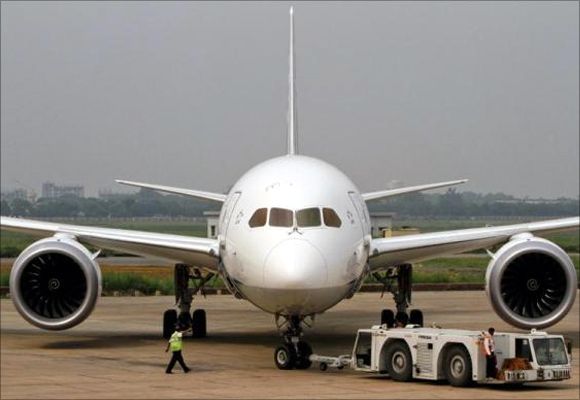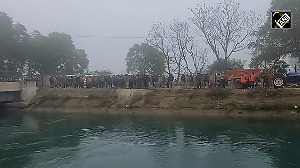The new civil aviation policy is just like previous ones - so it does nothing to address the old problems plaguing the sector, says Anjuli Bhargava.

Yawn, yawn yawn. On November 10, the aviation ministry suddenly woke up, issued a new civil aviation policy and put it up for comments.
Ever since it did this, several industry experts, players, observers, reporters and I have been looking through the document with a fine-tooth comb to find something - anything - new in it.
But no, there simply isn't a single new thought, direction or initiative in the new policy.
I don't know a more polite way to say this but it is a ridiculous document. Has the government confirmed that it would do away with the silly 5/20 rule?
No, it says the rule will be reviewed to encourage the entry of new Indian players - whatever that means.
The 5/20 rule actually prevents existing Indian airlines from flying overseas unless they have flown domestically for five years and have 20 aircraft in their fleet.
It doesn't prevent the entry of new Indian players anyway. So, only the government can explain what it means by this?
That it has been threatening to review this rule for a while is old hat anyway.
Then, to promote regional connectivity, the policy says a special package will be developed for the north-east to provide linkages to remote locations - again, very old hat - there's been a policy in place for this for years.
It further says the route dispersal guidelines will be reviewed without going into any detail.
In the same vein, the policy acknowledges that aviation turbine fuel prices in India are higher than other countries and it promises to rationalise the taxes on aviation turbine fuel - something that has been promised for the last several years and never fulfilled.

Of course, this is now a Modi government promise so maybe we can give them the benefit of doubt and some time to deliver.
Even more absurd is the promise of a new expert committee to come up with a road map to help Air India achieve its full potential.
To what end? Do we really need Air India today? And if we do, are we willing to pay any price to keep it going?
The document is silent on whether it is worth anyone's while to draw up such a road map. If we needed one at all, it should be on when and how to privatise the airline. But it is on airports that the policy says some of the strangest things.
It points out that four airports (Delhi, Mumbai, Bengaluru and Hyderabad) have been developed through public-private partnership (PPP) and how these are of international standards.
It then says that the government will develop more airports via PPP and that in the next phase Chennai, Kolkata, Ahmedabad and Jaipur will be taken up.

Haven't Chennai and Kolkata airports already been developed enough by the Airport Authority of India (AAI)? Didn't the United Progressive Alliance spend several thousand crores on developing these two airports just recently? The buildings are up and ready. So the kind of PPP development done in the other cities is not possible. What is worse is that AAI seems totally incapable of running them either.
Inspection after inspection has convinced the aviation ministry bureaucrats that AAI is not even able to keep toilets clean; let alone run an efficient facility. So now what?
That was the question that needed answering. One of the leading private airport developers to whom I spoke said if they were to take charge of these two airports they would have to break the new structures down.
That's how useless the structures are.
Working with what AAI has built is not an option, according to them. And talking of AAI, even the grand announcement to list Airport Authority of India and Pawan Hans on the stock exchanges sounds, to me, quite ludicrous.
You can't just list anything you like on the bourses just because a minister says so.
It must make some money on its own steam, promise some kind of return to investors, it has to have some credibility as an organisation.
Unless this entire exercise was done just to keep some bureaucrats busy for a bit (an idle mind is a devil's workshop and so on), few can figure what purpose this new aviation policy serves. It would have been better not to have done anything at all.












 © 2025
© 2025